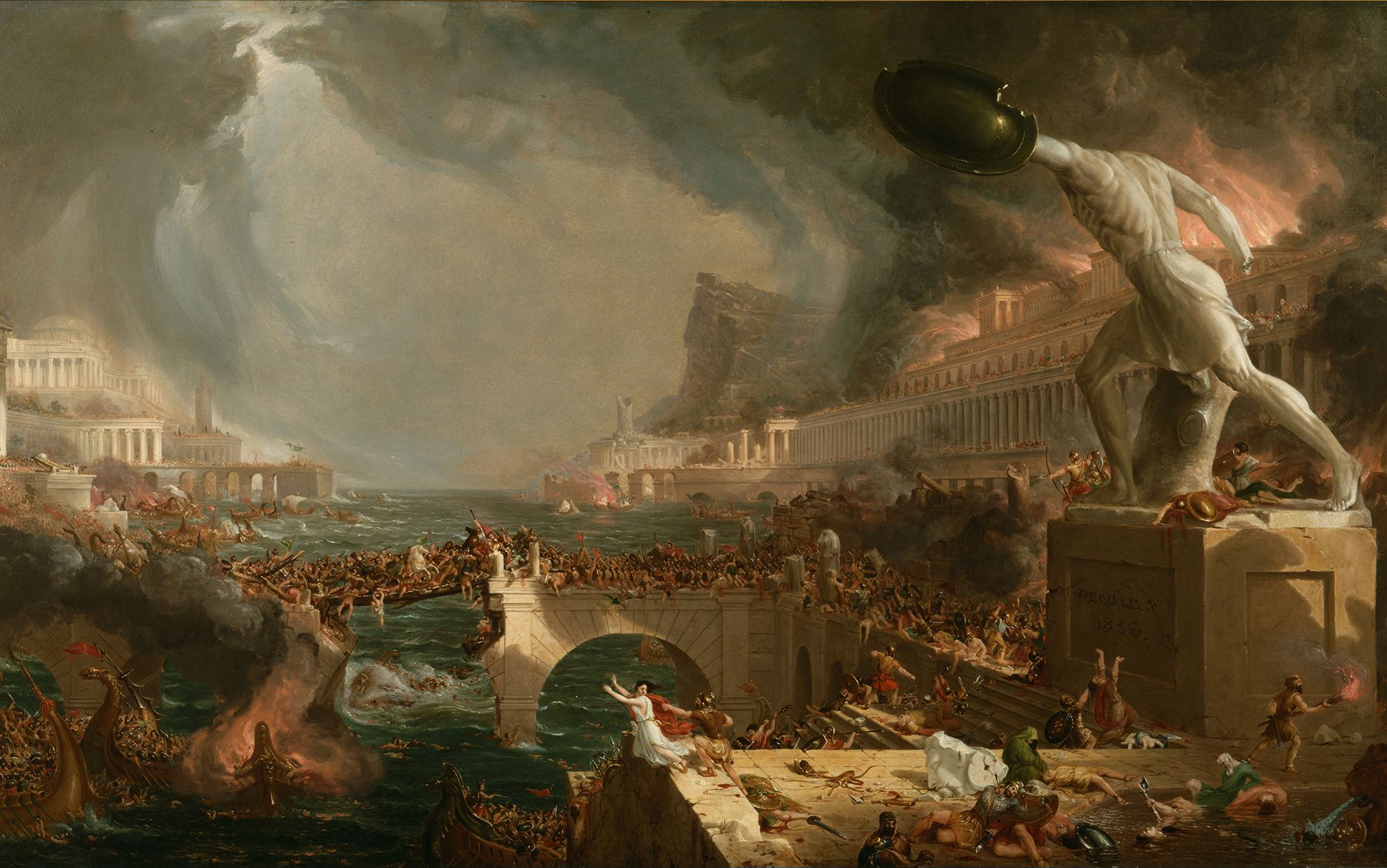“The story of its ruin is simple and obvious; and, instead of inquiring why the Roman Empire was destroyed, we should rather be surprised that it had subsisted so long. The victorious legions, who, in distant wars, acquired the vices of strangers and mercenaries, first oppressed the freedom of the republic, and afterwards violated the majesty of the purple. The emperors, anxious for their personal safety and the public peace, were reduced to the base expedient of corrupting the discipline which rendered them alike formidable to their sovereign and to the enemy; the vigor of the military government was relaxed, and finally dissolved, by the partial institutions of Constantine; and the Roman world was overwhelmed by a deluge of Barbarians.” — Edward Gibbon. The Decline and Fall of the Roman Empire, Chapter 38 “General Observations on the Fall of the Roman Empire in the West”

“After a diligent inquiry, I can discern four principal causes of the ruin of Rome, which continued to operate in a period of more than a thousand years. I. The injuries of time and nature. II. The hostile attacks of the Barbarians and Christians. III. The use and abuse of the materials. And, IV. The domestic quarrels of the Romans.” — Edward Gibbon. The Decline and Fall of the Roman Empire, Chapter 71 “Four Causes of Decay and Destruction.”
The moniker of my website originated from a quote by David Walker, then Comptroller General of the U.S., in 2007. I wholeheartedly endorsed Walker’s viewpoint and become politically active in trying to get Ron Paul elected as president in 2008 and 2012. It was a fruitless effort, as the uni-party in Washington DC, controlled by the dark forces of the Deep State, do not allow men and women who truly want to reduce the size and scope of government to ever get elected. His warning sixteen years ago is a perfect example of being right but being early. When talking about the decline of empires, you are really deliberating about a process, not an event. The Roman Empire did not fall on a specific day due to a specific cause. It collapsed in stages over hundreds of years due to numerous reasons, each triggering events which compounded upon each other and ultimately led to the final collapse.
Continue reading “FALL OF AMERICAN EMPIRE AND DESCENT INTO A NEW DARK AGES”










